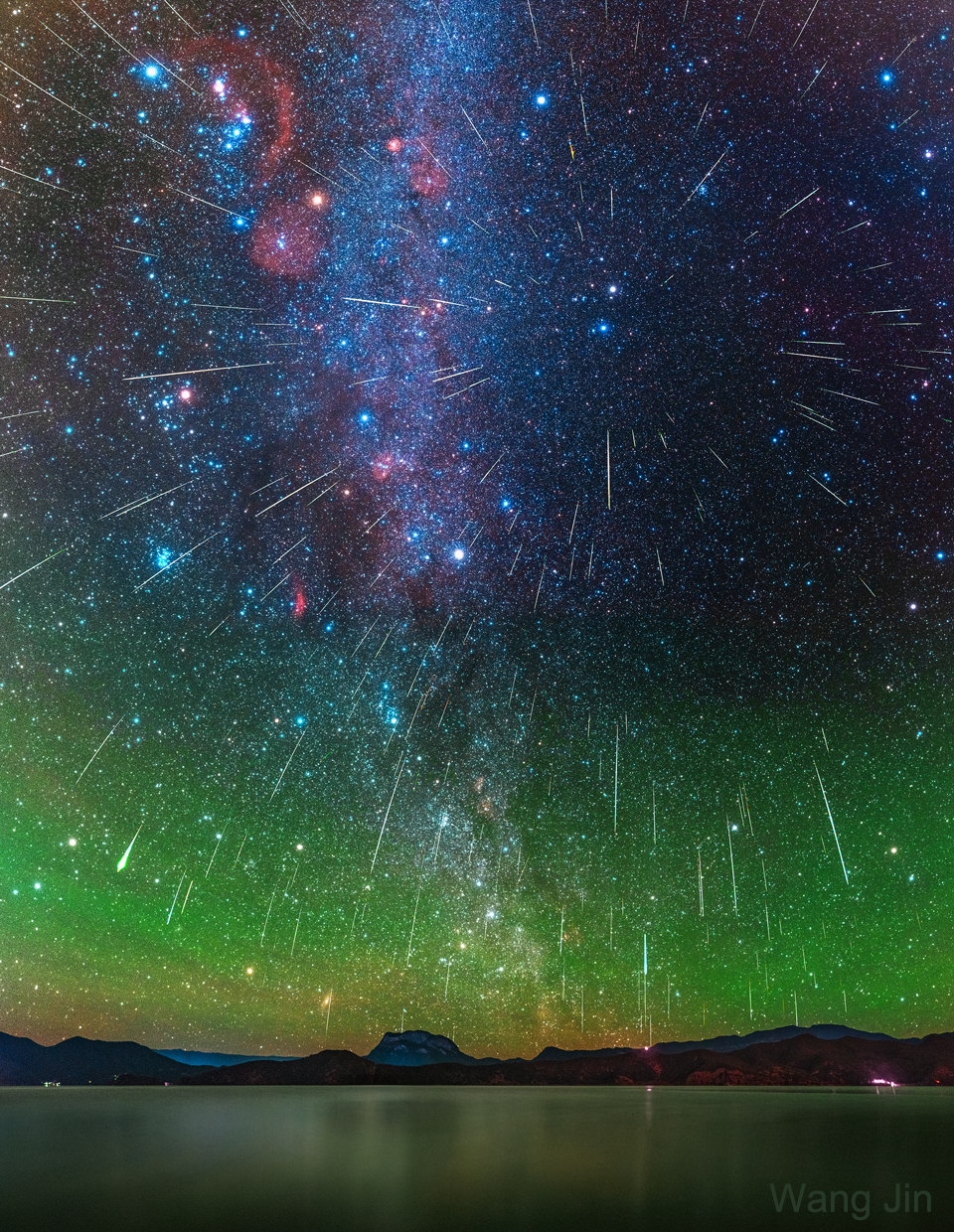2021年11月16日
Geminids from Gemini
Image Credit & Copyright: Wang Jin
Explanation: Where are all of these meteors coming from? In terms of direction on the sky, the pointed answer is the constellation of Gemini. That is why the major meteor shower in December is known as the Geminids — because shower meteors all appear to come from a radiant toward Gemini. Three dimensionally, however, sand-sized debris expelled from the unusual asteroid 3200 Phaethon follows a well-defined orbit about our Sun, and the part of the orbit that approaches Earth is superposed in front of the constellation of Gemini. Therefore, when Earth crosses this orbit, the radiant point of falling debris appears in Gemini. Featured here, a composite of many images taken during the 2020 Geminids meteor shower shows over 200 bright meteors that streaked through the sky during the night December 14. The best meteor shower in November, the Leonids, peaks tonight and tomorrow. Unfortunately, this year, dim meteors during the early-morning peak will be hard to see against a sky lit by a bright gibbous moon. Still, a few bright Leonid meteors should be visible each hour.
Tomorrow’s picture: double galaxy puzzler
双子流星雨
影像提供与版权: Wang Jin
说明: 这些流星是打那里来的?以在天空的方向来说,源头在双子座。因为这群12月的大流星雨,看以源自双子座内的辐射点,故称为双子流星雨。在三维空间上,自怪异法厄同小行星(3200 Phaethon)剥离的沙粒状碎片,沿着明确的轨道绕行太阳,而最靠近地球的轨道区则出现在双子座的前方。也因此,每当地球穿过这颗小行星的轨道时,那些洒落碎片的辐射点看似位于双子座之内。上面这幅组合自多张摄于2020双子流星雨期间之照片的主题影像,记录了超过200颗在12月14日那晚掠过长空的明亮流星。 11月最活跃的狮子流星雨的极大期,将出现在今晚和明晚。很遗憾的,在凸盈月的月华干扰下,今年清晨极大期天空中的暗流星大多隐不可见。不过,每小时还是能看到数颗明亮的狮子座流星。
明日的图片: double galaxy puzzler







